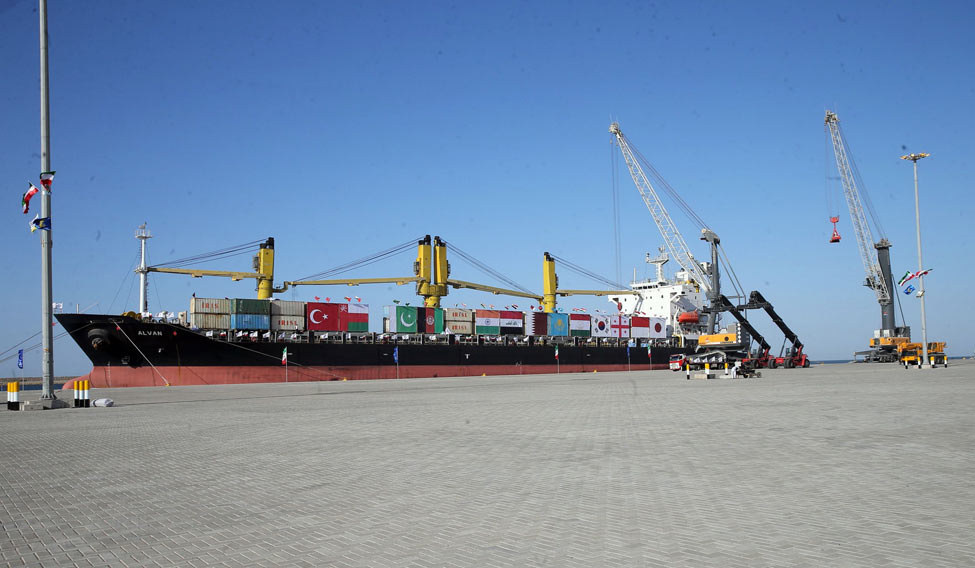Last year, on a visit to India, Afghanistan President Ashraf Ghani had come down harshly on Pakistan for blocking transit of cargo from India to Afghanistan via the Wagah border. He'd said that when two nations decide to connect, they will find alternatives. If the land route is blocked, there is the air and sea.
Earlier this year, the first air cargo from Kabul arrived in New Delhi, carrying Afghan exports coveted in India, largely, asafoetida. A complementary return flight took a huge consignment of pharmaceuticals and other Indian exports to the Afghan markets.
The flights are operational, though there is not yet a set periodicity to them. But opening the air route was a message to Pakistan, and actually also to expansionist China, whose aggressive Belt Road Initiative is underway. Some weeks ago, India sent its first consignment of wheat for Afghanistan through the new Shhid Behesti Port, or the Chabahar port in Iran. Ghani's statement had been validated.
But while the air corridor was rustled up within months, with some hectic parleying on both sides, the Chabahar port was not an overnight creation. It has been in the making for several years, and has gone through its share of plans-in-the-cold-storage. The Chabahar port in Iran was first thought of sometime in the early 2000s, under the prime ministership of Atal Behari Vajpayee. The Chabahar agreement with Iran was a potential future link for India to the Persian Gulf, Central Asia, and, of course, Afghanistan, which itself is a land-locked country and thus, portless.
The subsequent change of government in India, and then Iran getting into the back books of the US while India was forging a civil nuclear agreement with the US, put Chabahar on the slow track, and it was only in 2015 that the pace picked up again. There was a new geopolitical order in place. In May, an important trilateral treaty agreement between India, Iran and Afghanistan put in place a vision for the expansion of the Chabahar port programme, a project in which India has invested heavily. On December 3, as the first phase of the port project was opened, there was also a second ministerial level meeting between the three countries to discuss the implementation of the Trilateral Agreement on Establishment of International Transport and Transit Corridor, where the ministers agreed that Chabahar was a hub for regional economic connectivity. They agreed that an “integrated connectivity infrastructure, including ports, roads and rail networks would open up greater opportunities for regional market access and contribute towards the economic integration and benefit of the three countries and the region.''
At the time when Chabahar was first thought of, the Chinese BRI had not taken shape. But now that it has, and the controversial China Pakistan Economic Corridor (which Pakistan calls a game changer for its economy) is being worked on, Chabahar assumes even greater significance. Chabahar is around 70 kilometres away from Gwadar port in Pakistan, where the CPEC will terminate.
Chabahar region is Iran's only oceanic port, and it consists of two ports, Shahid Behesti and Shahid Kalantri. India and Iran both have aspirations of being regional players, and the port offers this opportunity. With the right railway and road connections, it can be an entry way to Europe through linages with the Trans Siberian Railway. It also provides several Central Asian countries trade routes through the North South Transport Corridor. Chabahar also provides India easy access to its air base in Tajikistan.
For India, connectivity with Afghansitan is of prime importance, given the hostile neighbour sandwiched in between. Chabahar is 800 km closer to Afghanistan that Karachi is. India's multi billion dollar investment plans for the project include developing the main port, as well as connectivity through the Chabahar Zahedan railway which could be extended to Herat and Mazar-e-Sharif in Afghanistan and even Uzbekistan. There are even long term plans, on Iran's side, on a canal connecting the Caspian Sea to the Persian Gulf.






